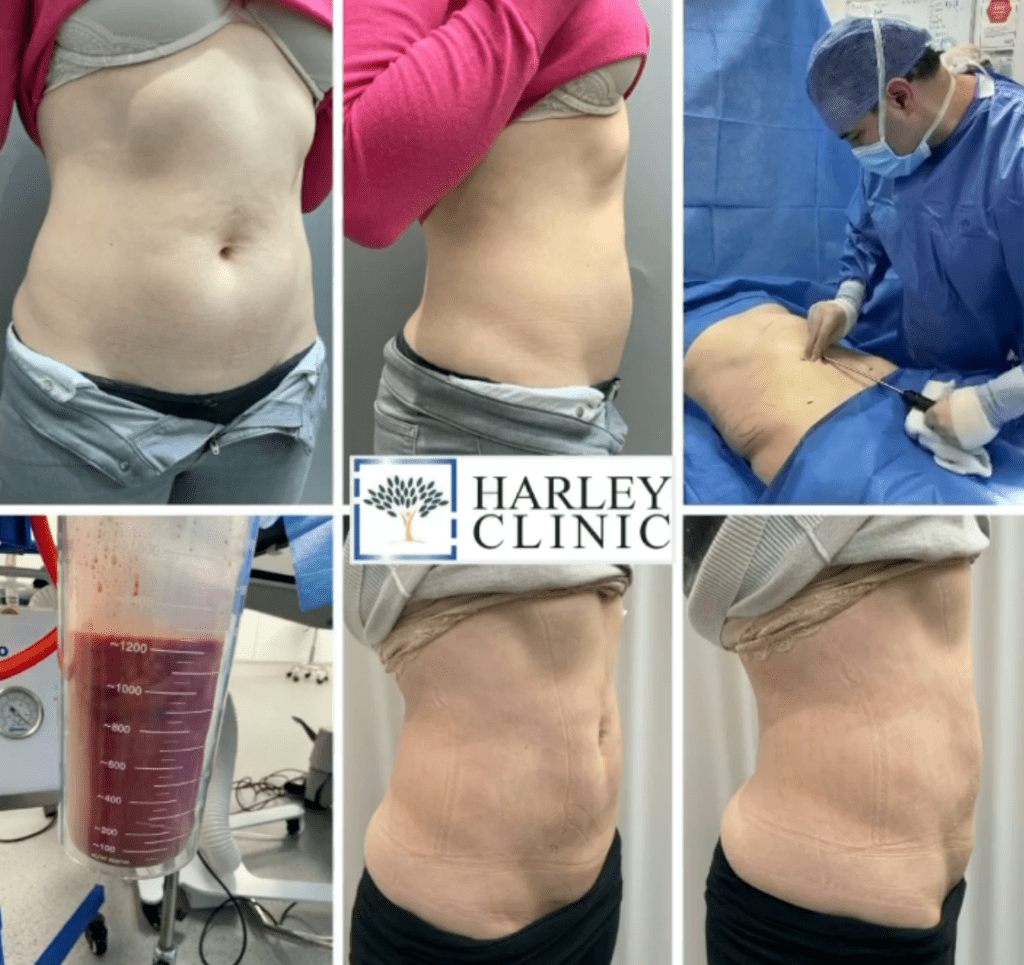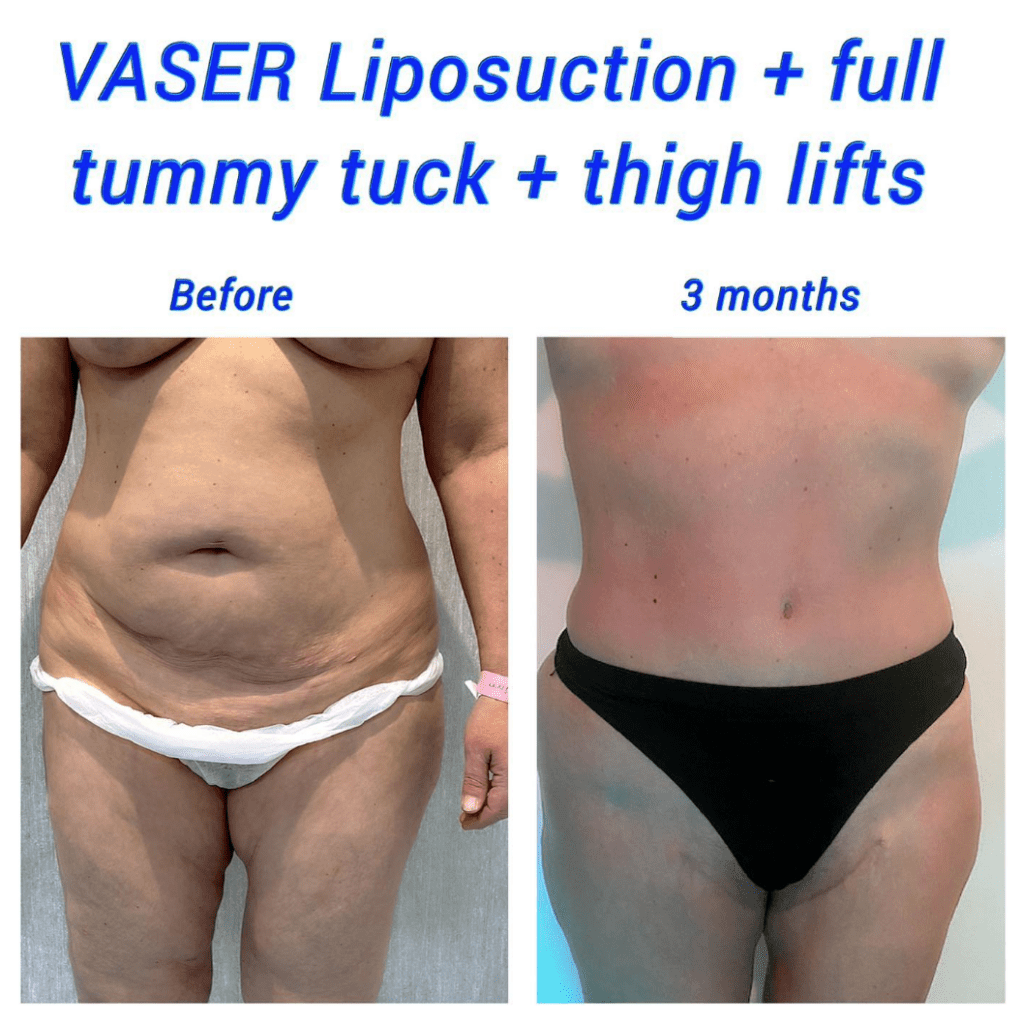An abdominoplasty or a tummy tuck is one of the most popular cosmetic surgeries for men and women. Over time, things like weight changes, ageing, and childbirth can impact how your stomach looks. This can really affect your self-confidence and how happy you are with what you see in the mirror. Many people turn to abdominoplasty surgery to restore a smooth stomach and sculpted waistline to achieve their dream bodies.
A tummy tuck isn’t a substitute for exercise. It’s possible to achieve a flat stomach without surgery through exercise, healthy eating and other lifestyle changes. At times, no matter how many lifestyle changes you make or how many hours you work out in the gym, stubborn fat around the midsection remains. In such a case, abdominoplasty may be a suitable solution.
What is a Tummy Tuck?

Tummy tuck surgery flattens the tummy by removing excess fat and skin and tightening the abdominal walls. It can also help remove stretch marks in the lower part of the stomach. Abdominoplasty surgery is a popular treatment, especially following pregnancy and massive weight loss.
A plastic surgeon performs the surgery under general anaesthetic. Your surgeon will make a small incision on the pubic mound before tightening the abdominal walls and removing excess or sagging skin. This leaves you with a flatter, more toned stomach.
There are different types of tummy tuck surgeries. Your surgeon will talk you through your options to help you make the best decision. Types of abdominoplasty surgery include:
Mini tummy tuck: This is a cosmetic procedure done on people with fat deposits below the belly button. The surgeon makes a small incision below your belly button, removes excess fat and tightens the skin for a firmer, more contoured mid-region. During a mini-tummy tuck, the surgeon doesn’t move the belly button. Depending on your case, the surgery can take anywhere from an hour to two hours under general anaesthesia.
Full tummy tuck: If you have a full tummy tuck, the surgeon makes a hip-to-hip incision, after which they will contour the skin, muscle and tissue. This type of surgery is extensive, and in most cases, the surgeon will move the belly button and reposition it after the surgery. With a full tummy tuck, you might require drainage tubes for a few days to drain away excess fluid and blood from the surgical site.
Skin tightening: Sometimes, you may be a candidate for a skin tightening procedure. Skin tightening is suitable for individuals who have a lot of loose, sagging skin, mainly caused by excessive weight loss. If you’ve lost lots of weight and have loose skin, the surgeon makes incisions, removes excess skin, and tightens what remains. Sometimes, this procedure may involve a belt lipectomy where the surgeon contours the waistline if you have loose skin extending to your lower back.
So, how long does tummy tuck surgery take?
Depending on your case and the results you are expecting, a tummy tuck procedure can take one hour to five hours. The more complex the procedure, the more time you will be under general anaesthesia.
Abdominoplasty is generally an outpatient procedure. The surgeon may or may not suggest that you stay overnight at the hospital after the procedure. During a tummy tuck, the surgeon might recommend liposuction to get rid of excess fat before the waistline is contoured.
What are Tummy Tuck Surgery Complications?
After the surgery, you will have pain and swelling at the surgical site and possibly drainage tubes. Your surgeon will recommend pain medication if needed. The soreness may last several weeks, and you may also experience numbness, bruising, and tiredness.
Like any cosmetic procedure, a tummy tuck carries a certain degree of risk. This risk increases if you have diabetes, poor circulation, lung, heart or liver disease and if you smoke.
Some of the common complications following a tummy tuck procedure may include:
- Hematoma (where blood collects outside of your blood vessels)
- Scarring
- Infection
- Blood clots
- Poor wound healing
- Numbness or change in sensation
Serious complications occur in a few cases, especially when a qualified plastic surgeon does not perform the surgery. They include:
- Fat necrosis or death of the fatty tissue deep in the skin
- Asymmetry (lopsidedness or unevenness)
- Wound separation
Who is a Suitable Candidate for Abdominoplasty?
Contrary to popular belief, abdominoplasty surgery is suitable for both men and women as long as you are in good health and have a stable weight. It is, however, not ideal for smokers since the risk of complications increases. If you are a smoker and considering getting a tummy tuck, consider quitting smoking for a while until you have the procedure.
Either way, if you have excess fat and flab that doesn’t go away with a healthy diet and exercise, a tummy tuck may be right for you. Perhaps you feel your stomach is affecting your confidence, and you want to fit into your clothes comfortably without worrying about your tummy.
A tummy tuck is ideal for women whose skin and muscles have stretched over time due to pregnancies. In such a case, an abdominoplasty can help tighten the muscles and reduce loose skin. The procedure is also an excellent alternative for men and women who have lost weight but still have loose skin or excess fat deposits in the abdominal area.
A tummy tuck is not a substitute for weight loss or a quick fix. You should be as close to your ideal weight as possible to achieve the best results. The ideal candidate is a non-smoker with a stable weight in relatively good physical health.
A tummy tuck is also not in any way liposuction. The two are entirely different procedures. Liposuction involves the removal of fat deposits. However, a surgeon may choose to perform liposuction as part of an abdominoplasty procedure.
What Results Does Abdominoplasty Surgery Help Achieve?
There will be a small scar in your bikini area following a tummy tuck procedure. You might have poor skin elasticity, excess fat, and weakened connective tissue in the abdominal area due to:
- Pregnancy
- Significant weight changes
- Abdominal surgery like a C-section
- Body type
- Ageing
An abdominoplasty helps remove excess fat and skin and tightens weak fascia. The procedure also helps eliminate excess skin in the lower abdomen (below the belly button) and stretch marks. However, keep in mind that an abdominoplasty will not correct stretch marks outside the abdominal area. Sometimes, the surgeon will combine a tummy tuck with other body contouring procedures like breast surgery, thigh lift or a butt lift for a more contoured overall physique.

How Long Does it Take To Recover From a Tummy Tuck?
You will feel sore and tender immediately following your surgery. The recovery time differs from one person to another. Your doctor will discuss your recovery plan with you before surgery.
There is no one answer to how long recovery takes. It can take a few weeks to feel like yourself again. You need to prepare for your initial recovery period, especially during the first couple of weeks. After a month or two, you will start seeing the results as the swelling goes down. In general, the recovery process takes about six weeks. Be kind to yourself, rest and follow your recovery plan.
Tummy Tuck Surgery UK: Abdominoplasty at Harley Clinic
The more time you take to research and prepare for your surgery, the stronger you will be afterwards. Having a firm and toned stomach can make a big difference to how you feel and look.
If you’re considering a tummy tuck procedure, contact the Harley Clinic for a free consultation to know if you are the right candidate for the surgery and find out what steps to take next.













